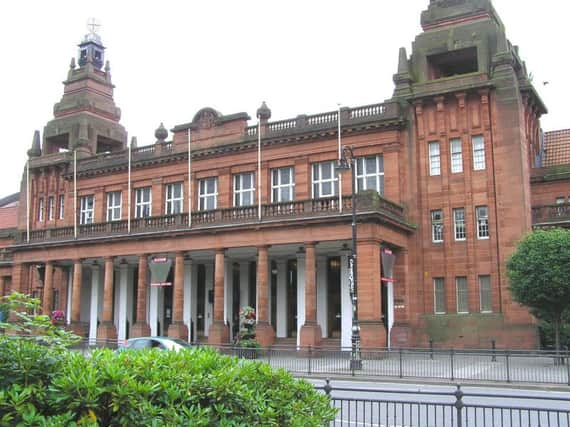Joe Wilson: What’s in store for Glasgow’s Kelvin Hall Project


While the atmosphere in museum circles prior to George Osborne’s budget last week was tinged with a distinct air of impending doom – one which is unlikely to have alleviated in smaller regional museums – there was at least some good news. The decision to retain free entry to national museums undoubtedly was the most important, but the most intriguing was a further commitment to public access to some of the UK’s finest collections. In his statement, Osborne pledged £150 million to allow for the construction of a new state-of-the-art storage facility to rehome the hidden collections of the British Museum, Science Museum and V&A. This will not only improve conditions for the objects, but for people too, providing the public with access to their national treasures without having to wait patiently for an exhibition to reveal them.
In Scotland we are ahead of this game already. The Glasgow Museums Resource Centre (GMRC) has been operating for several years now, allowing the public to make appointments at their leisure to view its collections, and the National Museum of Scotland opened a similar site in Edinburgh this year. There are some who argue that accessible storage is not the answer, and that national museums should improve the visibility of stored treasures by loaning them to smaller museums in need of fresh attractions. Steven Parissien, director of Warwickshire’s Compton Verney gallery, this week accused London’s national museums of “cultural colonialism” in their hoarding of stored masterpieces.
Advertisement
Hide AdAdvertisement
Hide AdThere are few who would deny that a loaning of these objects to smaller institutions would be desirable but the reality is that this is not always possible. Some museum objects are stored rather than publicly displayed because they have stringent conservational requirements, while some others are set aside as research material. In some cases objects can be caught up in red tape, making them ineligible for display. Glasgow’s Burrell Collection was famously trapped in storage purgatory for 39 years due to William Burrell’s problematic bequest that his treasures be given to the people of the city, but couldn’t be displayed within it.
The chief reason larger museum services have so much in storage however is that the collections are simply that vast. Glasgow’s flagship museum Kelvingrove Museum and Art Gallery, even with its cavernous interiors and “salon-hangs,” can only host 8,000 of the 1 million objects in the city’s public collections. Even with a further eight museums across the city exhibiting from the same resource pool, less than 1 per cent of this collection is on display outside of the GMRC. Glasgow Museums could fill all the smaller museums in its vicinity and its need for storage would remain unchanged.
This is why the Kelvin Hall Project is so exciting. Set to open in the summer next year, “Phase 1” of the initiative will see the historic venue re-open as a “centre for cultural excellence,” housing publicly accessible collections for The Hunterian, Glasgow Museums (from remaining non-GMRC stores) and The National Library of Scotland, alongside extensive teaching facilities. Additionally, the site will feature areas for objects to be conserved in public view, beginning with the Charles Rennie Mackintosh-designed suite from Mrs Cranton’s Ingram Street Tearooms.
Belgium’s Museum aan de Stroom in Antwerp is one institution that has mastered the idea of accessible storage. Opened to the public in 2011, the galleries and storerooms are housed in the same building, with visitors free to transition between both at their leisure. The storerooms function like an extension of the museum – with everything made visible – without the flair or interpretation of that which is officially exhibited. This gives visitors a unique opportunity to really engage with the artworks or themes that inspire them by allowing them to immediately discover similar or related objects. In addition to this, the storeroom also seeks to educate visitors about conservation and its other primary functions.
Kelvin Hall will share many of Museum aan de Stroom’s attributes. Its public conservations and easy-to-access objects being key, but it is its location that is most desirable. While the GMRC is a little out of the way, Kelvin Hall is directly across the street from Kelvingrove, and following the completion of “Phase 2” of the project, will also house the exhibited collection of The Hunterian (currently displayed across Glasgow University). Following this, The Hunterian would have the ability to emulate Museum aan de Stroom entirely, with only one set of traffic lights preventing Kelvingrove from doing likewise.
It is in this period between Phase 1 and 2 of the Kelvin Hall Project that I often worry about public perception of what it actually is. Making the collections accessible is one thing, getting the public to understand the endeavour is another. While an incredible resource in its own right, prior to the completion of Phase 2, Kelvin Hall will function best as an incredible supplement to Kelvingrove Museum, and I hope the public appreciates this; my message to them when it opens next year is, simply, use it. Few museums in the world can offer so much of their collections in one place like that; I very much doubt Osborne’s new storage centre in London will be particularly close to its national museums (which are already half an hour from each other). Those stores will make hidden treasures visible if you make time to seek them out; Kelvin Hall, meanwhile, will have brought them to you.